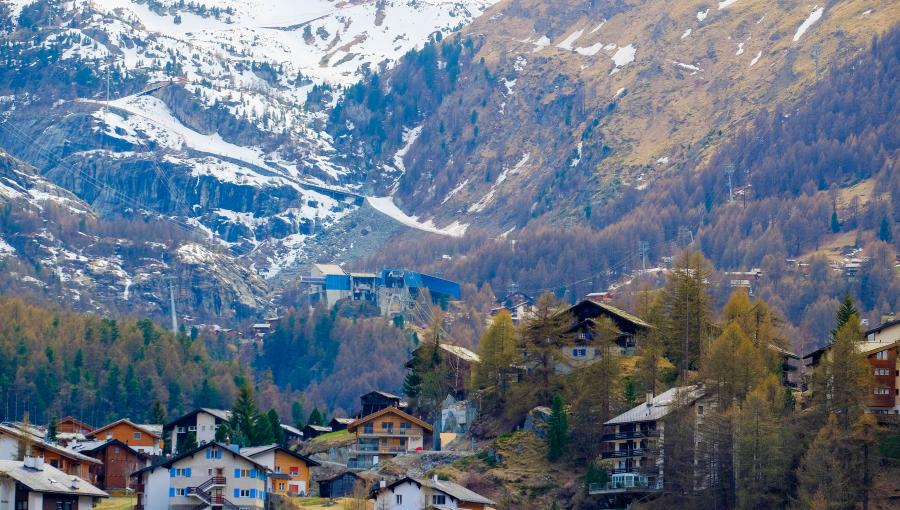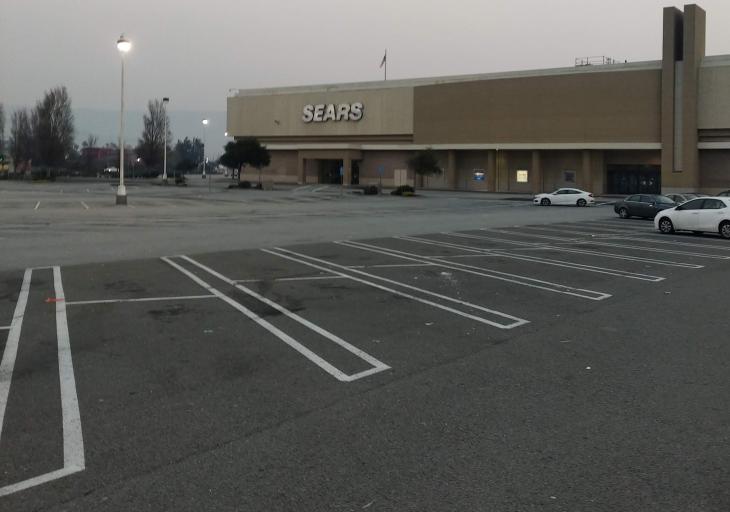
The potential benefits that nature provides may not be realized if people do not have access to them. Ecosystem services are increasingly being considered in natural resource management, but this requires an understanding of where they are produced and who benefits from them. This is because managing to preserve or enhance ecosystem services in one place may result in winners and losers. Both social and biophysical factors affect who benefits from a given ecosystem service. Socio-environmental researchers have begun to integrate spatial ecology with resilience theory. Previously, spatial studies were confined to the natural environment, focusing on, for example, how the spatial distribution of biodiverse land can serve as wildlife corridors. An essential new avenue of research integrates ecological with social benefits by considering how spatial distributions co-influence ecosystem and social network resilience. This lesson is a guide to understanding the basics of spatial resilience and applying its insights to a city in your region.
- Learn the terms, concepts, and goals behind the integrative science of spatial resilience.
- Understand the importance of mapping the supply and demand of ecosystem services.
- Consider social and environmental justice in the same conversation as biodiversity and green infrastructure.
"Negative" versus "positive" resilience: View this common image from the American landscape: an empty parking lot in front of a shuttered store. Think about its history, function, ecological impacts, and social services. How is this landscape “resilient” in a way that an ecologist or sociologist would refer to as "negative"—that is, how does it interfere with ecological and social processes? What would you do with this acreage to make it ecologically and socially connected and valuable to wildlife and humans—or in other words, resilient in the "positive" sense?
-
Before class, have participants read this short Explainer on Socio-Environmental Resilience as well as the articles by Cumming 2011 and Egerer et al. 2020. In regards to the articles, undergraduates may be instructed to read the highlighted sections found below, while more advanced learners should read the entire articles. Ask all to take notes on a few crucial insights on how to integrate social and ecological benefits into urban planning as a way to achieve greater resilience.
DocumentDocument -
(15 min.) As desired, start the class session ensuring everyone understands: supply and demand of ecosystem services and why mapping these is a pressing issue; what networks are and how they can be used to represent ecological, social, and socio-ecological relationships; and what the concept of "spatial resilience" brings to understanding ecosystem service flows. The following PowerPoint will help with this and it provides explicit guidance (in the notes section) for the instructor.
Document -
(10 min.) Ask the participants to pull out their notes from the assigned readings for this part of the exercise. Have them respond to the following questions as you tabulate the essential elements of their responses on the board or in an electronically shared document: 1) What are the commonalities/differences between biophysical and social connectivity? 2) How do the commonalities between the two relate to ecosystem services and resilience? 3) What are the social implications of spatial disconnects between the supply and demand of ecosystem services?
-
(25 min.) Have learners complete the following interactive activity using an urban garden/ing socio-ecological network. This exercise will illustrate concepts around the supply and demand of ecosystem services.
In a lightning session, bring up a map of your city or town, and have participants call out neighborhoods they regard as “privileged,” “transitional” and “vulnerable.”
List ecological amenities or liabilities to each category (tree cover, private gardens; highways, hardscapes, brownscapes); then list social amenities or liabilities (libraries, community centers, recreation facilities; crime, poverty, dereliction, poor housing, no grocery stores).
Have participants select which neighborhood they would live in, if money were not involved. List the “desirable” places as models for future development. Note: there should be some surprises here: not all will want to live in the biggest houses in the fanciest neighborhoods. Social factors like community integration matter. Encourage participants to think beyond material privilege to find the essence of the ideal community. How does this ideal integrate infrastructure, social, and ecological goals?
Next, locate the community gardens and parks in your city (searching Google maps with keywords “community gardens in _____” will bring up locations, though it may not be comprehensive). How are the gardens and parks distributed? Is there a correlation between privilege and green space?
Now, locate community gardens and parks in vulnerable neighborhoods. View the landcover (hardscape versus ecological), demographics if available, and the spatial distribution of social and ecological amenities. Take a screenshot of this map, and have small groups of students (3-4) identify critical spaces that would support spatial resilience in the form of community gardens. Consider both biophysical and social features, as the Egerer article describes in detail. They might focus on derelict, marginal, and borderline spaces.
Time permitting, have each group share their map of target spaces for new community gardens. Ask them to explain how this placement might foster wildlife and biodiversity as well as the flow of ecosystem services to communities, i.e., spatial resilience. Note that gentrification often follows investment; ask participants to consider how to support existing vulnerable communities without threat of pricing them out of their home (a difficult problem).
End by highlighting 1-2 “ideal” locations for a new community garden.
-
A transnational perspective of global and regional ecosystem service flows from and to mountain regions
This article (referred to in the PowerPoint) does an excellent job explaining how there can be a mismatch between the provision of ecosystem services (where they are produced) and areas of benefits. The authors provide specific examples in which they assessed the spatial flows of multiple ecosystem services from and to mountain regions. They also explain how the services/benefits can be connected by, for example, transportation of goods from the supply area. Finally, they explain why ecosystem service based management requires mapping the supply and demand.
Schirpke, U., Tappeiner, U., & Tasser, E. (2019). A transnational perspective of global and regional ecosystem service flows from and to mountain regions. Scientific Reports 9(1), 1-11. https://doi.org/10.1038/s41598-019-43229-z
-
Ecosystem service flows: A systematic literature review of marine systems
This article defines ecosystem service flows, elaborates on this using a marine example, explaining why understanding flows is essential for assessing ecosystem services, and also provides key attributes the authors believe should be in all such assessments.
Chalkiadakis, C., Drakou, E.G., & Kraak, M.J. (2022). Ecosystem service flows: A systematic literature review of marine systems. Ecosystem Services 54, 101412. https://doi.org/10.1016/j.ecoser.2022.101412
-
Living Through India’s Next-Level Heat Wave
This article provides a vivid portrait of India’s infrastructure and could be the basis for an exercise with students asking them: how might these extreme socio-environmental challenges benefit from spatial resilience analysis?
Khullar, D. (2022, July 25). Living Through India’s Next-Level Heat Wave. The New Yorker. https:// www.newyorker.com/magazine/2022/08/01/living-through-indias-next-level-heat-wave
